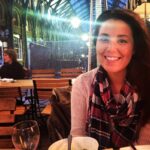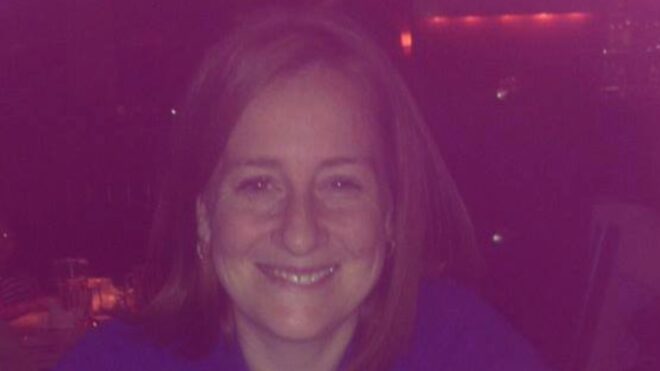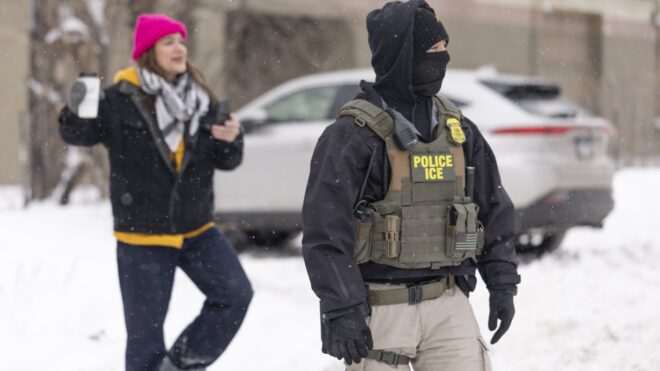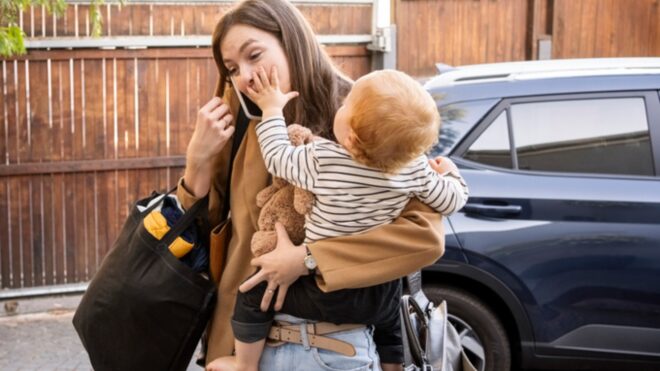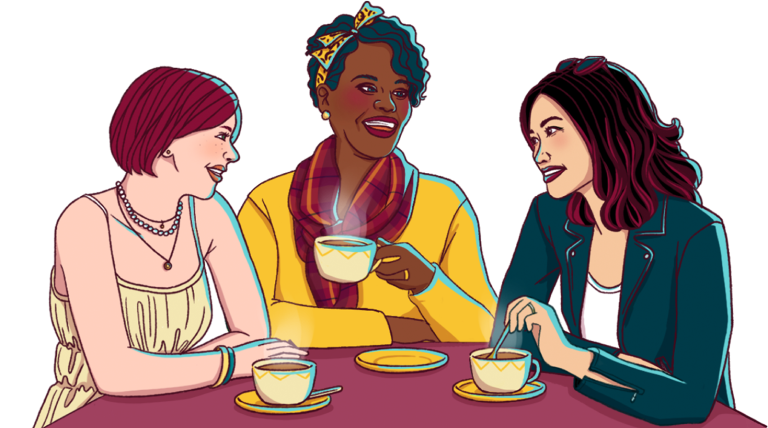Each year, roughly 276,480 new cases of invasive breast cancer will be diagnosed in women across the US. An estimated 42,170 are expected to lose their battle by the end of 2020, according to the American Cancer Society. The risks are real and many of the numbers are scary, but among them, there are also countless stories of hope, perseverance, and — most of all — survival. Those are the stories that many women have sought to elevate this October, and as Breast Cancer Awareness Month drew to a close, some of the most powerful stories that emerged have been shared by women who made the bold decision to go "flat."
About 25% of patients with breast cancer opt to go flat.
The term refers to women who undergo a mastectomy as part of their treatment, during which all breast tissue (including the nipple) is removed. The majority of these patients go on to receive breast reconstruction surgery to rebuild the look and shape of the breast, but one-quarter of these women do not.
They are the ones who go "flat." The women who decide that for one reason or another, their cancer journey is done and their body is beautiful the way it is.
The decision alone can be freeing — but it can also be terrifying.
Juliet FitzPatrick of Hertfordshire, England, knows what it's like. The writer was first diagnosed with breast cancer back in January 2016 and has been "flat" for several years.
At just 54 years old, the news hit her like a ton of bricks.
"I was shocked and surprised as I'd not seen or felt any signs or symptoms," she tells CafeMom. "The tumor was in my left breast and I had a mastectomy, followed by chemotherapy and Herceptin."
She describes getting the news that she needed a mastectomy as one of the worst moments of her life. Still, she powered through, and dutifully followed the advice of her doctors.
"My medical team assumed that I would have breast reconstructive surgery and I agreed because I didn't know anyone who'd had breast cancer or a mastectomy," she explains. "The operation would be 8 or 9 hours and would involve taking fat from my stomach and fashioning a breast mound on my chest."
But after several days of thinking it over, Juliet decided against it.
"I decided after a few days that I wouldn't have the surgery and would remain flat," she recalls, matter-of-factly. "In fact I wanted to have my other breast removed too, as I had very large breasts and didn't want to be lopsided."
But at first, she was met with some pushback.
"My surgeon refused at that time, and I indeed did hate being lopsided," she says.
Finally, in November 2017, she went ahead with a second mastectomy to remove her remaining breast, and she never looked back.
She hasn't worn a bra or a prosthesis in the last three years.
And no, it doesn't make her feel any less feminine or secure. In fact, it's done quite the opposite.
"I am definitely different in some ways," she shares. "I feel empowered, stronger, more confident, and more in touch with my feelings. I say yes much more often. I am cancer-free and of course I'm very happy about that. I am aware though that the cancer may come back and I educate myself on what the signs or recurrence are."
Juliet has since become an advocate for women like herself.
She shares her story, along with candid photos of herself, on Instagram throughout the year, but in October, she often gets more vocal — particularly on October 7.
For the last two years, that date has been recognized worldwide as International Flat Day, after being launched by flat advocates Christy Avila, Robyn Towt, Devorah Vester Borenstein, Penny Dubbs Dudek, and Kim Bowles.
Last month, along with thousands of others, Juliet took to her Instagram feed to share her story proudly.
In her post, she admitted that she still has moments of reticence before sharing topless photos of herself, but ultimately, she knows how important it is.
"I share my photos and story to increase the visibility of women living flat and to try to reduce the taboo and stigma that I feel still exists," she tells CafeMom. "It's important to show that we are still beautiful women who feel happy, strong and natural with our bodies and are not afraid to show them."
Because of that, she's gone outside her comfort zone on more than a few occasions.
"I've appeared on billboards in Times Square and Piccadilly Circus and in a TV commercial to try to get this message across and to represent the flat community," she shares.
Slowly but surely, that message has been building.
Scroll through the hashtag #InternationalFlatDay, and you'll see thousands of posts from women who have walked in her shoes.
Not all, of course, are topless. Some women merely share everyday snapshots of themselves, happily living their lives without boobs.
And guess what? They're more than pleased with the decision they made.
"Grateful for my choice to have an aesthetic flat closure following my unilateral mastectomy in 2012," one Instagram user shared on October 7. "I had no idea how lucky I was when my surgeon not only heeded my wishes for a fully flat result (not skin-sparing), but also respected me enough to not ask my husband's opinion on my breast surgery."
Not everyone who goes flat does so for the same reasons.
For Jamie Lee of St. Joseph, Michigan, her first decision was actually to move forward with reconstruction surgery.
At the time, she was young — just 33 years old — and had two very young boys.
"My oldest was 5 and my youngest was a baby in diapers," she recalls. "I wanted to fight and do the most aggressive treatment that I could. My only goal was to be able to watch my boys grow up."
She went through chemotherapy, a bilateral mastectomy, and finally, she attempted breast reconstruction. But unfortunately, things didn't go as planned.
"I ended up with a horrible infection and opted to remove the expanders and go 'flat,'" Jamie shares. But the decision wasn't met with as much acceptance as she might have thought.
"This was 8 years ago (prior to Angelina Jolie's bilateral mastectomy) and many people thought it was a radical decision," Lee shares. "But I felt that it was the right choice for me."
Now, Jamie knows firsthand why it's so important to share her story — and her photos.
"After my mastectomy, I had never seen what the outcome would look like," she tells CafeMom. "At the time, no one was posting pictures of what their chests looked like."
Going flat was like walking into the unknown — a new kind of existence she had to learn to embrace.
"I had been contacted by my local mammography studio and asked to model for pictures for their new studio," Jamie recalls. "Initially, I declined as I had no breast. However, that's exactly what they wanted. They were looking for women that had been through all different types of breast surgeries including a bilateral mastectomy."
Jamie says she was apprehensive about posting the photos afterward, but she did it anyway.
"I was so nervous, but I knew it would help other women in some way," she shares. "Either they would look at the pictures and think 'I don't want to look like that, I better take care of my breast health' or they would say 'Wow I look like that also and that's OK too."
In the end, Jamie was glad she did it.
"I had an outpouring of women contact me saying they were also flat and felt empowered by my photos," says Jamie, who adds that she is now cancer-free and will be celebrating her eight-year "cancerversary" on December 14.
But this year, on International Flat Day, she decided to celebrate big, so she took to the skies.
"I decided to skydive topless and bare my scars," she shares. "I dedicated this jump to all the other women that are flat and proud."
In the process, she hoped to convey one clear message.
"I am not ashamed of my body; I am proud of my scars," she declares. "When a women can feel comfortable and beautiful after whatever breast cancer leaves you, THAT is BEAUTIFUL."
She's also grateful that Instagram provides women a place to share these stories — and these images — openly.
"I hope that my stories and photos can reach as many women as possible," she says. "I want women to know they are not alone. There are many of us that have been in your shoes. We need to redefine beauty."
Shay Sharpe has learned this lesson several times throughout her cancer journey.
She tells CafeMom that she was first diagnosed with stage III ER+/PR+ breast cancer back in 2004 when she was just 26. With no prior history of breast cancer in her family, she was stunned. But in the years since, Shay has learned that most women who've been diagnosed with breast cancer actually don't have a family history of the disease.
Her diagnosis also came at a particularly vulnerable time — her younger brother had been killed just six months prior, and she was raising her 9-year-old daughter on her own. Still, she says there wasn't any time to feel sorry for herself or ask "Why me?"
So instead, she pushed onward.
The week before her 27th birthday, the Baltimore native had both of her breasts removed. For 10 years, she lived cancer-free — until at age 36, when the cancer returned to the very same spot.
Once again, Shay went through treatment, and once again, she was deemed cancer-free. It's now been six years, and she's proud to report that her latest scans all came back clean. But as a young Black woman who endured the disease twice before the age of 40, she feels it's especially important to share her story with others.
"Oftentimes in the Black community, health is a taboo topic," she admits. "Our elders were not very forthcoming with their ailments, so that's probably why many African American families don't discuss breast cancer or widely share reconstruction photos."
"As a young African American woman, I am not the image that you see on commercials or billboards whenever they are discussing breast cancer," she continues. "But I exist. My story exists. You always hear breast cancer and age 40 in the same sentence, but I probably would not have lived to age 40 during either of my diagnoses, as young women and African American women tend to have more aggressive forms of breast cancer."
Shay has since become a metastatic breast cancer advocate through her nonprofit organization, Shay Sharpe's Pink Wishes. In October, she too took to her Instagram page to share topless images of herself in hopes of empowering others. Her hope is that through learning her own journey, young women come to realize that they can and do develop cancer, even if they don't think it could happen to them.
But at the same token, they can and do survive — even if it means their bodies look different than the ones they had before. At the end of the day, there can still be beauty, hope, love, and happiness on the other side of cancer — and these women are living proof.
